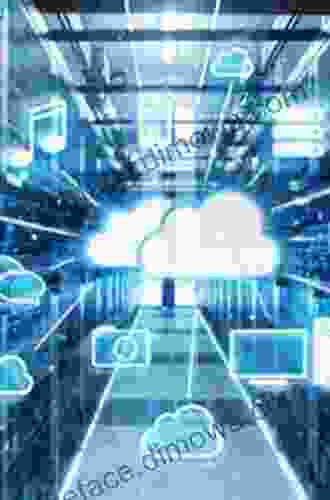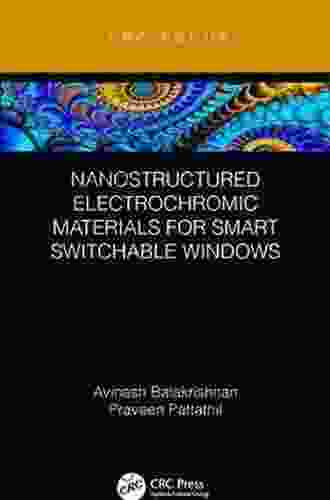Nanostructured Electrochromic Materials For Smart Switchable Windows: Revolutionizing Energy-Efficient Architecture

In the realm of modern architecture, the pursuit of sustainable and energy-efficient solutions has become paramount. Among the various innovations that have emerged, the development of nanostructured electrochromic materials (NECMs) holds immense promise for revolutionizing the way we design and construct buildings. This article delves into the captivating world of NECMs, exploring their exceptional properties, applications in smart switchable windows, and their potential to transform the architectural landscape.
Unveiling the Extraordinary Properties of NECMs
Nanostructured electrochromic materials are a class of advanced materials that exhibit remarkable electrochromic properties. Electrochromism refers to the ability of a material to reversibly change its optical properties, such as color and transparency, in response to an applied electrical voltage. This unique characteristic stems from the material's ability to undergo redox reactions, leading to the insertion or extraction of ions.
5 out of 5
| Language | : | English |
| File size | : | 2277 KB |
| Screen Reader | : | Supported |
| Print length | : | 126 pages |
| X-Ray for textbooks | : | Enabled |
The nanostructuring of electrochromic materials introduces several advantages over their bulk counterparts. By controlling the size, shape, and morphology of the nanostructures, researchers can fine-tune the material's electrochromic performance. This level of control enables the customization of optoelectronic properties, such as switching speed, coloration efficiency, and optical modulation range.
NECMs exhibit several exceptional properties that make them ideal for smart switchable window applications. These properties include:
High Optical Modulation:
NECMs can achieve high levels of optical modulation, ranging from fully transparent to deeply colored states. This wide modulation range allows for precise control of light transmission, enabling the adjustment of indoor lighting conditions according to external lighting conditions.
Fast Switching Speed:
NECMs possess fast switching speeds, enabling rapid transitions between transparent and colored states. This fast response time is crucial for dynamic control of light transmission, allowing buildings to adapt to changing environmental conditions.
Long-Term Stability:
NECMs exhibit excellent long-term stability, maintaining their electrochromic properties over extended periods. This durability is essential for ensuring the longevity of smart switchable windows and reducing maintenance requirements.
Energy Efficiency:
NECMs offer significant energy savings compared to traditional window systems. By dynamically adjusting light transmission, NEC-based smart windows can reduce the need for artificial lighting and cooling systems, resulting in lower energy consumption.
Harnessing NECMs for Smart Switchable Windows
Smart switchable windows are an innovative architectural solution that combines advanced materials with intelligent control systems. By integrating NECMs into these windows, architects can create dynamic facades that can automatically adjust their optical properties in response to environmental stimuli.
The operation of NEC-based smart switchable windows is based on the electrochromic properties of the materials. When a voltage is applied across the window's electrodes, the NECM layer undergoes redox reactions, causing a change in its optical properties. This change can be triggered by a variety of external stimuli, such as sunlight, temperature, or user input.
Smart switchable windows offer numerous benefits, including:
Enhanced Energy Efficiency:
By dynamically controlling light transmission, smart switchable windows can significantly reduce energy consumption. This is particularly advantageous in buildings with large glazed facades, where traditional windows can lead to excessive heat gain or loss.
Improved Thermal Comfort:
Smart switchable windows can enhance thermal comfort by reducing glare and regulating indoor temperature. During hot summer days, the windows can be tinted to block solar radiation, while in winter, they can be made transparent to allow natural light to enter and warm the interior.
Privacy Control:
Smart switchable windows offer excellent privacy control. By adjusting the opacity of the windows, occupants can control the level of visibility between interior and exterior spaces, ensuring privacy when desired.
Enhanced Aesthetics:
Smart switchable windows provide architects with new design possibilities. The ability to change the appearance of the building's facade dynamically allows for the creation of responsive and aesthetically pleasing structures.
NECMs: A Catalyst for Architectural Innovation
The advent of nanostructured electrochromic materials has unleashed a new era of architectural possibilities. By harnessing the unique properties of NECMs, architects and designers can now create buildings that are not only energy-efficient but also responsive and dynamic.
The applications of NECMs extend far beyond smart switchable windows. They can also be integrated into other architectural elements, such as skylights, skylights, and curtain walls, to create innovative and sustainable building solutions.
Furthermore, the ongoing research and development in the field of NECMs hold promise for even more advanced applications in the future. These include self-cleaning surfaces, anti-fogging coatings, and energy-generating facades.
Nanostructured electrochromic materials represent a transformative technology for the architecture industry. Their exceptional properties, combined with the versatility of smart switchable windows, empower architects to envision and create buildings that are both energy-efficient and adaptable to changing environmental conditions.
As NECMs continue to evolve and improve, we can expect to witness even more innovative applications in the years to come. These materials have the potential to revolutionize the way we design, construct, and interact with our built environment, paving the way for a future of sustainable and responsive architecture.
5 out of 5
| Language | : | English |
| File size | : | 2277 KB |
| Screen Reader | : | Supported |
| Print length | : | 126 pages |
| X-Ray for textbooks | : | Enabled |
Do you want to contribute by writing guest posts on this blog?
Please contact us and send us a resume of previous articles that you have written.
 Book
Book Novel
Novel Page
Page Chapter
Chapter Text
Text Story
Story Genre
Genre Reader
Reader Library
Library Paperback
Paperback E-book
E-book Magazine
Magazine Newspaper
Newspaper Paragraph
Paragraph Sentence
Sentence Bookmark
Bookmark Shelf
Shelf Glossary
Glossary Bibliography
Bibliography Foreword
Foreword Preface
Preface Synopsis
Synopsis Annotation
Annotation Footnote
Footnote Manuscript
Manuscript Scroll
Scroll Codex
Codex Tome
Tome Bestseller
Bestseller Classics
Classics Library card
Library card Narrative
Narrative Biography
Biography Autobiography
Autobiography Memoir
Memoir Reference
Reference Encyclopedia
Encyclopedia Honea Byrne
Honea Byrne Donald M Johnstone
Donald M Johnstone Gary Barnes
Gary Barnes Ludwig Steub
Ludwig Steub Steven Myers
Steven Myers Dennis Mcconaghy
Dennis Mcconaghy K Ancrum
K Ancrum Diane K Mccarty
Diane K Mccarty Denise Laura Voshell
Denise Laura Voshell Diane Chamberlain
Diane Chamberlain James Walvin
James Walvin Dianne Harman
Dianne Harman Shelly Lunde
Shelly Lunde Dinah Williams
Dinah Williams Don Thomas
Don Thomas Dominique Wolf
Dominique Wolf Rose Monway
Rose Monway Tori Vogt
Tori Vogt Michael Medders
Michael Medders Don Mcdonald
Don Mcdonald
Light bulbAdvertise smarter! Our strategic ad space ensures maximum exposure. Reserve your spot today!

 Carl WalkerUnveiling the Intimate Lives and Revolutionary Ideas of Abigail Adams and Her...
Carl WalkerUnveiling the Intimate Lives and Revolutionary Ideas of Abigail Adams and Her...
 Elias MitchellUnlock the Secrets of Dominance: The Ultimate Guide to Becoming an Elite...
Elias MitchellUnlock the Secrets of Dominance: The Ultimate Guide to Becoming an Elite...
 Francisco CoxNightingale Deva Fagan: A Captivating Journey of Love, Loss, and Redemption...
Francisco CoxNightingale Deva Fagan: A Captivating Journey of Love, Loss, and Redemption... Darnell MitchellFollow ·9.7k
Darnell MitchellFollow ·9.7k Brayden ReedFollow ·3.6k
Brayden ReedFollow ·3.6k Ron BlairFollow ·4.1k
Ron BlairFollow ·4.1k Travis FosterFollow ·9k
Travis FosterFollow ·9k Gary CoxFollow ·6.2k
Gary CoxFollow ·6.2k Billy FosterFollow ·12.8k
Billy FosterFollow ·12.8k Louis HayesFollow ·13.1k
Louis HayesFollow ·13.1k Hugh ReedFollow ·7.6k
Hugh ReedFollow ·7.6k

 John Steinbeck
John SteinbeckUnveiling the Return of the Antichrist and the New World...
As darkness descends upon the...

 Kenzaburō Ōe
Kenzaburō ŌeEmbark on an Unforgettable Journey: "Something Lost...
Prepare to be captivated as you...

 Hunter Mitchell
Hunter Mitchell"The Penguin Who Knew Too Much": A Captivating Mystery on...
Prepare yourself for an...

 Jack Powell
Jack PowellMaster the Art of Staying Present and Profitable in the...
In the relentless...

 Pete Blair
Pete BlairEscape into a Tropical Paradise with "Toucan Keep Secret"
Immerse Yourself in the Vibrant World of a...
5 out of 5
| Language | : | English |
| File size | : | 2277 KB |
| Screen Reader | : | Supported |
| Print length | : | 126 pages |
| X-Ray for textbooks | : | Enabled |








